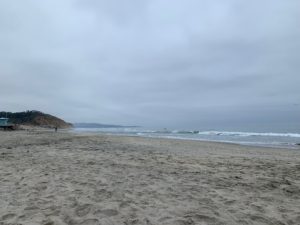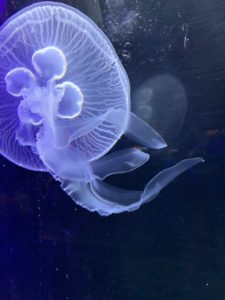Hello everyone, my name is Danika Petit and I have an incredible opportunity to be interning at George Lab in San Diego. I drove here last weekend and began the internship on Monday. This week has been slow because of Olivier George and Giordano De Gulielmo presenting their research at a conference. 
We began our first day by filling out lots of paperwork in order to obtain our badges necessary to gain access to the buildings that contain the rats and other facilities necessary to conduct research. Although our primary mentors were gone we were lucky enough to see the begging of a large five-year project known as GWAS or Genome-Wide Association Study. This project is two years in the making with the main goal is to identify genes that are responsible or associated with the use of oxycodone, cocaine, nicotine, and alcohol. In the morning we go with Sharona Sedighim, one of the scientists and our mentors, to the BSB building which contains four rooms of around 16 self-administration chambers each. These chambers contain a rat during either a two hour time period or a longer duration. The morning cohort was done in a two-hour time frame where the rats were introduced to their first round of cocaine. After they have completed their time in the chamber the chambers must be cleaned- that’s where we come in- we clean all of the chambers so the next cohort of rats are not able to smell the previous rats because if they do it can cause extraneous variables.
In the afternoon Molly Brennan, one of our mentors, performed the Tail Immersion experiment with rats being injected with oxycodone. This experiment triggers the sensory cortex when the rats tail is submerged into a bath of warm to hot water. The rats were injected with .3ml of oxycodone for both males and females (usually supposed to be different for males and females) then after 5 minutes, they were rolled up into a towel and Molly submerged their tail into the water timing how long it takes for the rat to pull its tail out of the water. Molly and her team performed the control with the same rats a few days ago; the difference between the control and the treated experiment had a huge gap between the time the rat pulled its tail from the water. For example, an “innocent” rat could only withstand approximately two seconds but under the influence of oxycodone, that same rat could go anywhere from 5-10 seconds.
On Wednesday I worked with Kokilla, who taught me about her RNA and DNA samples and how she extracts the DNA/RNA. RNA is much more unstable than DNA is so she uses a polymerase which mimics the other half of the RNA in order to make it more stable. She then went through a lot of pipetting to make different aliquots- cutting it in half every time in order to see the differences. She takes chunks of a sliced mammalian brain (the rat) and uses small circles of tissue, then takes it through a very specific process in order to see which genes are responsible for addiction to cocaine. The way she isolates genes is by using two reagents one for the front and one for the back of the gene. What it does is separates the gene from the rest of the DNA strand in order to see the gene clearly.
On Thursday we had a meeting with Dr. Giordano De Gulielmo, as he had returned from his conference, and he talked to us about what he has done. He uses optogenetics and fiber optics in order to inhibit and mimic the effect of the neuropeptide CRF. With a very complex number of steps and more explanation, he is able to make a rat who shows severe withdrawal symptoms and using several techniques in order to make the rats’ symptoms “disappear.” Giordano can also make a rat who has never siped alcohol before exhibit the same withdrawal symptoms as the rat who is addicted. By manipulating small subsets of the brain and neurons he is able to turn off and on brain areas that are responsible for alcohol addiction by injecting DAUN02 into the brain, specifically into the central amygdala. The process is far more complex than that short explanation. This could potentially be done on humans in 30-40 years, but the long term effects are unknown.
In my free time, I have gone to the beach, to the Scripps Birch Aquarium, explored the vast city, and visited Balboa Park.
Thank you for reading, come back next week to find out about my future adventures at George Lab.
-Danika Petit

There are no comments published yet.